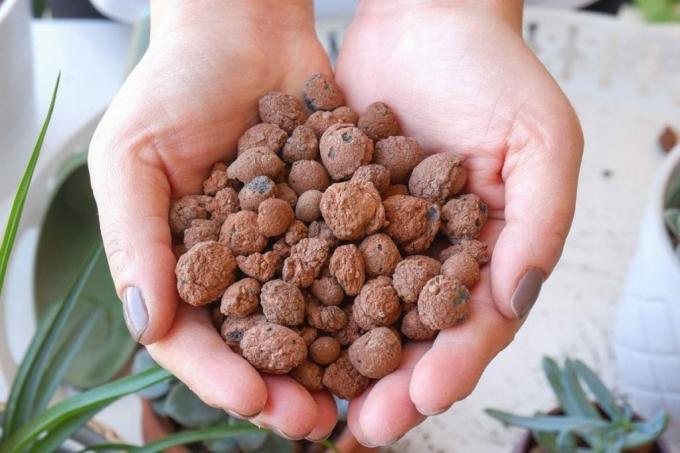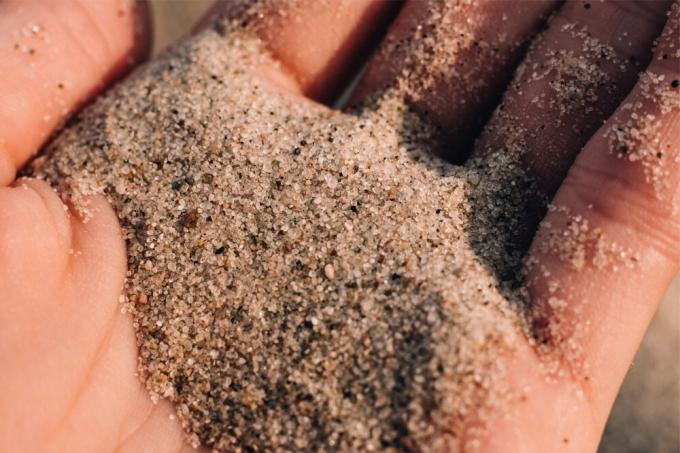
table of contents
- Palm trees
- Palms & preferred substrate (selection)
- composition
- Mix the substrate together
- Buy palm soil
- frequently asked Questions
Palm trees bring exotic flair into the room or on the balcony. In order for them to develop well, you should pay attention to the right substrate. The palms place different demands on the earth.
In a nutshell
- There is no earth for every 2,600 palm species
- Differentiation between palm trees from dry and humid regions
- respond to the needs of the palm species with your own mix
- Pay attention to the quality of palm soil from the trade
Palm trees
Palms (palm family, bot. Arecaceae or Palmae) form a family of their own in the plant kingdom. This includes 183 genera and around 2,600 species. The natural habitat of many palm species are the tropical and subtropical areas of our planet. Others live in semi-arid climates, i.e. in areas with long dry periods. It is therefore not surprising that not all palm trees make the same demands on their soil.
Palms & preferred substrate (selection)
Because of the biodiversity of the palm trees, the pH value has proven to be an indicator of the right soil. Below you will find the pH value for a small selection of palm trees as well as other properties:
- Mountain palm (Chamaedorea): 6.5 - 7.9; good drainage, moderate sand somewhat calcareous
- Date palm (Chamaedorea): 5.6-8.4; not too dense, stores moisture
- Hemp palm (Trachycarpus): 5,5 – 7,2; moderately sandy, undemanding
- Kentia palm (Howea): 5.4-7.0; lots of sand, good drainage
- Coconut palm (Cocos): 6.0 - 6.6; good drainage, moderate to a lot of sand, rather undemanding
- Christmas palm (Veitchia): 6.5 - 8.4; high proportion of sand (60 percent), calcareous earth

As is easy to see from the overview, palm trees prefer one
- slightly acidic and
- well drained
Earth. One agent that makes the earth acidic is peat. However, since this is problematic during dismantling, alternatives such as:
- Coconut fiber (coir) or
- Coconut
Clay granules or perlite, for example, are suitable for loosening the substrate.
composition
In order for the soil to match the palm tree, a distinction is essentially made between species that prefer it to be moist and those that prefer a dry subsoil. For the composition of the substrate this means:
- dry environment: higher proportion of pearlites and expanded clay
- humid environment: higher proportion of clay and perlite
Regardless of this, the mineral components of the palm soil should make up about 30 percent. Important sources of nutrients for palm trees are sand and quartz grit. In the organic sector, guano or horn shavings are cheap nutrients.
Tip: In the case of large palm species, the proportion of garden soil should be over two thirds so that the often top-heavy palm trees have a better hold.

Mix the substrate together
Palm species from humid regions
- containing humus
- angry
- Coconut substrate-garden soil mixture (or potting soil-humus mixture)
- Quartz sand
- calcareous loam or clay
- Drainage layer: Lavalite, perlite or vermiculite plus peanut shells or humus on pine bark
Sample recipe
- 70 percent coconut substrate (Kokohum, CocoBlock)
- 5 percent clay or loam (finely crumbly, low in lime)
- 10 percent quartz sand
- 15 percent mineral (pumice, lavalite, rock wool etc.) and organic drainage (pine bark, peanut shells)
Palm species from arid regions
- Flower or garden soil based on bark humus plus coconut (ratio 3: 2)
- mineral-containing drainage layer made of perlites, vermiculites or lavalites
Sample recipe
- 50 percent coconut substrate
- 20 percent loam or clay (finely crumbly, low in lime)
- 10 percent quartz sand
- 20 percent mineral drainage (Lavalit etc.)

Buy palm soil
Whether special soil for palm trees from the trade is just as good for the plants or not is assessed differently. Since they are looser than flower or Is plant soil, you should definitely prefer special soil to conventional soils.
You can recognize high-quality palm soil by the following characteristics:
- mixed with expanded perlite (loosening)
- Quartz sand
- Agrosil (slow release fertilizer)
- Kokoshum (peat substitute)
If necessary, lime is added to the palm soil, as some palm species love calcareous soils.
frequently asked Questions
Yes, it is possible and is often recommended by experts.
Yes, bark humus or loose compost can be added up to a proportion of 20 percent of the soil mixture in the example recipe.
Normal garden soils do not need special palm preparation. You should improve heavy soils with sand and light (sandy) soils with clay.
